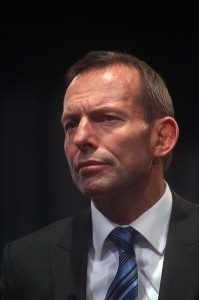closing the gap 2014: are we there yet?
The 2014 Close the Gap report, released this week has highlighted a number of disturbing statistics regarding the disadvantage of Australia’s Indigenous population and the necessity for more Indigenous community led initiatives.
The Close the Gap initiative was implemented six years ago to tackle the issues of Aboriginal disadvantage by setting a number of health, education, and unemployment goals to be achieved by 2030.
This week Prime Minister, Tony Abbott stated that the nation is failing to achieve the ‘more important and the more meaningful targets.’
Abbott announced a new focus on school attendance; ‘it’s hard to be literate and numerate without attending school… it’s hard to find work without a basic education and it’s hard to live well without a job.’
With this the Prime Minister announced a new target, ‘to end the gap between Indigenous and non-Indigenous school attendance within five years.
However, there has been a mixed reaction to the Prime Minister’s announcement by various Indigenous groups who have called instead for more community-based initiatives.
The Chairman of the National Aboriginal Community Controlled Health Organisation, Justin Mohamed, stated that giving Indigenous people control over their own health care will lead to more success in health targets.
The association representing Aboriginal and Torres Strait Islander nurses, CATSINaM agrees. Faye Clarke, one of the association’s Board of Directors stated that to achieve the 2030 target it is fundamental to have more Indigenous nurses and staff who are culturally trained.
She stated, ‘we are the people that work in community, we are part of the community and we know our families in our community.’
Recognising the need to have Indigenous communities involved in the process, Opposition Leader Bill Shorten stated, ‘let us empower Aboriginal and Torres Strait Islander families, teachers, nurses, not-for-profits and business to tell us what works – rather than demanding policies that fit the rhetoric…’
‘Aboriginal people deserve better than being told it’s as simple as: “go to school”, “go to work” and “obey the law,”‘ he said.
This week, the first female Indigenous federal parliamentarian, NT Labor Senator Nova Peris, announced that women in the Northern Territory were 80 times more likely to be hospitalised due to assault, a statistic that Peris points out is ‘a horrific statistic that no Australian should accept.’
Targets with None to Limited Progress
- Close the life expectancy gap (non-Indigenous people live on average ten years longer than Indigenous Australians)
- Numeracy and literacy rates (improved only in years 3 and 5)
- Employment rates, if any have slipped backwards (30 percent of indigenous adults in remote areas are employed in a mainstream job)
Targets on Track
- To halve the gap in child mortality within a decade
- To have 95 percent of remote children enrolled in preschool


